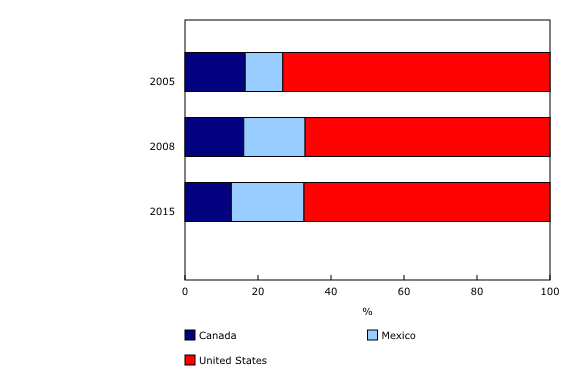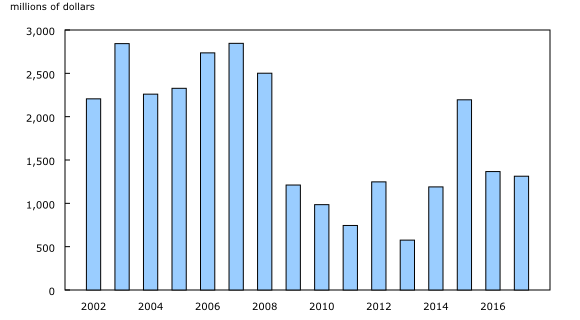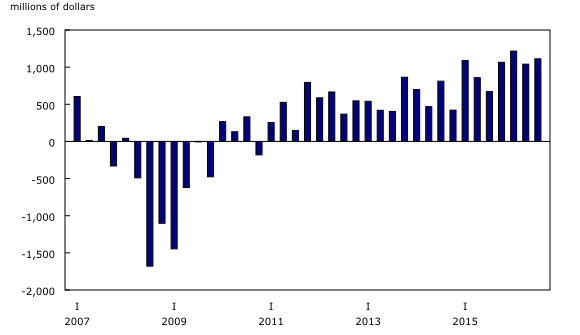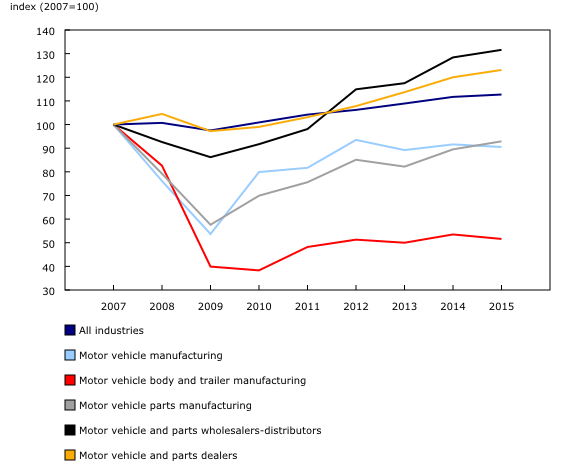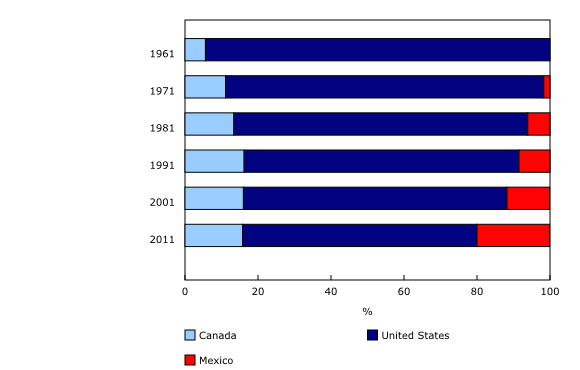Study: Recent trends in motor vehicle industries, 2015
Archived Content
Information identified as archived is provided for reference, research or recordkeeping purposes. It is not subject to the Government of Canada Web Standards and has not been altered or updated since it was archived. Please "contact us" to request a format other than those available.
Released: 2017-03-03
The motor vehicle sector is an important part of the Canadian economy. Two new studies provide a comprehensive overview of how different segments of the Canadian motor vehicle sector have evolved since the 2008-2009 recession and within a North American context.
Canadian motor vehicle manufacturers have faced heightened competition since the 2008-2009 recession
Canadian motor vehicle manufacturing industries are highly integrated in global value chains and compete internationally for market share. As Canada's motor vehicle manufacturing industry has become increasingly export oriented, the performance of Canadian manufacturers has been influenced by heightened competition for US market share. Although new motor vehicle sales in the United States recovered quickly from declines related to the 2008-2009 recession and increased substantially in recent years, Canadian output for motor vehicle manufacturing remained below pre-recession levels in 2015.
Canada's share of North American production substantially declined following the 2008-2009 recession and continued to decrease in recent years, down from 16.5% in 2005 to 12.7% in 2015, while Mexico's share rose markedly during this period.
Motor vehicle manufacturers modernized plants and shifted production to light trucks in 2015
In 2015, Canadian motor vehicle manufacturers repositioned by increasing investment and shifting production to light trucks, a category which includes sport utility vehicles, pick-ups and minivans. Capital spending in motor vehicle assembly remained relatively low following the recession until 2015, when manufacturers invested in modernizing assembly plants and investment rose to a post-recession high of $2.2 billion.
Following shutdowns for planned investments in early 2015, motor vehicle output accelerated in late 2015, up 8.1% in the third quarter and 1.4% in the fourth quarter of 2015. Output continued to increase in early 2016, advancing 7.7% and surpassing pre-recession levels for the first time. Employment rose at a slower pace than output, as the number of hours worked and the share of overtime earnings increased in late 2015 and stayed high in early 2016, indicating that increased work intensity contributed to output gains. In the second and third quarters of 2016, output slowed from the recent peak reached in early 2016.
Profits up as motor vehicle manufacturers' shift to higher-margin light trucks
Recent trends in operating profits also highlight motor vehicle manufacturing's repositioning in 2015, as profits and profit margins increased in late 2015 and remained high in early 2016. Operating profits rose to a recent peak of $1.2 billion in the first quarter of 2016, while profit margins increased to 4.4%, up from average profit margins of 2.6% in 2013 and in 2014. Higher profits coincided with the acceleration in output and a shift to higher-margin light trucks.
Growth in wholesale and retail of motor vehicles outpaced manufacturing from 2007 to 2015
In contrast to Canada's motor vehicle manufacturing industries, performance of wholesale and retail trade motor vehicle industries reflects domestic demand. Similar to the United States, new motor vehicle sales in Canada rose substantially following the declines of the 2008-2009 recession, increasing 22.4% in terms of units sold from 2010 to 2015, as consumers increased spending on light trucks and non-American brands, coinciding with a period of favourable borrowing conditions.
By 2015, output for the wholesale and retail segments of the motor vehicle sector was significantly higher, while output for the manufacturing segments remained below pre-recession levels. From 2007 to 2015, output for motor vehicle manufacturing declined 9.5%, while output for motor vehicle parts manufacturing decreased 7.1%.
During the same period, output for motor vehicle and parts dealers rose 23.1% and output for motor vehicle parts and accessories merchant wholesalers increased 31.6%. Similarly, employment for wholesale and retail trade motor vehicle segments increased from 2007 to 2015, while employment declined in motor vehicle and motor vehicle parts manufacturing.

In celebration of the country's 150th birthday, Statistics Canada is presenting snapshots from our rich statistical history.
Data on the units of motor vehicles produced in North America from 1961 onwards highlights Canada's contribution to the market over the last 50 years
Prior to Mexico entering the market, Canada was responsible for a relatively small share of North American production, contributing 5.6% to total production in 1961, while the United States manufactured the bulk of motor vehicles. However, production in Mexico and Canada increased substantially in the following decades.
In 1999, when Canada's share of North American production reached a peak of 17.4%, Canada produced about two vehicles for every vehicle sold to consumers in the domestic retail market.
Since then, Canada's share of North American production has declined, reaching 15.8% in 2011 and decreasing even more since the 2008-2009 recession, when Canada produced about one vehicle for every vehicle sold in the domestic retail market.
Mexico's share of North American production increased over the last five decades, surpassing Canada as the second main producer of motor vehicles in North America in 2008. Mexico's share of total production increased to 19.9% in 2011.
Products
The research articles, "Differences in Post-recession Performance for Auto Manufacturers and Service Industries," and "Motor Vehicle Manufacturers Reposition in 2015," which are part of the paper series Economic Insights (11-626-X), are now available.
Contact information
For more information contact us (toll-free 1-800-263-1136; 514-283-8300; STATCAN.infostats-infostats.STATCAN@canada.ca).
To enquire about the concepts, methods or data quality of this release, contact Elizabeth Richards (613-863-4623; elizabeth.richards@canada.ca), Analytical Studies Branch.
- Date modified:


